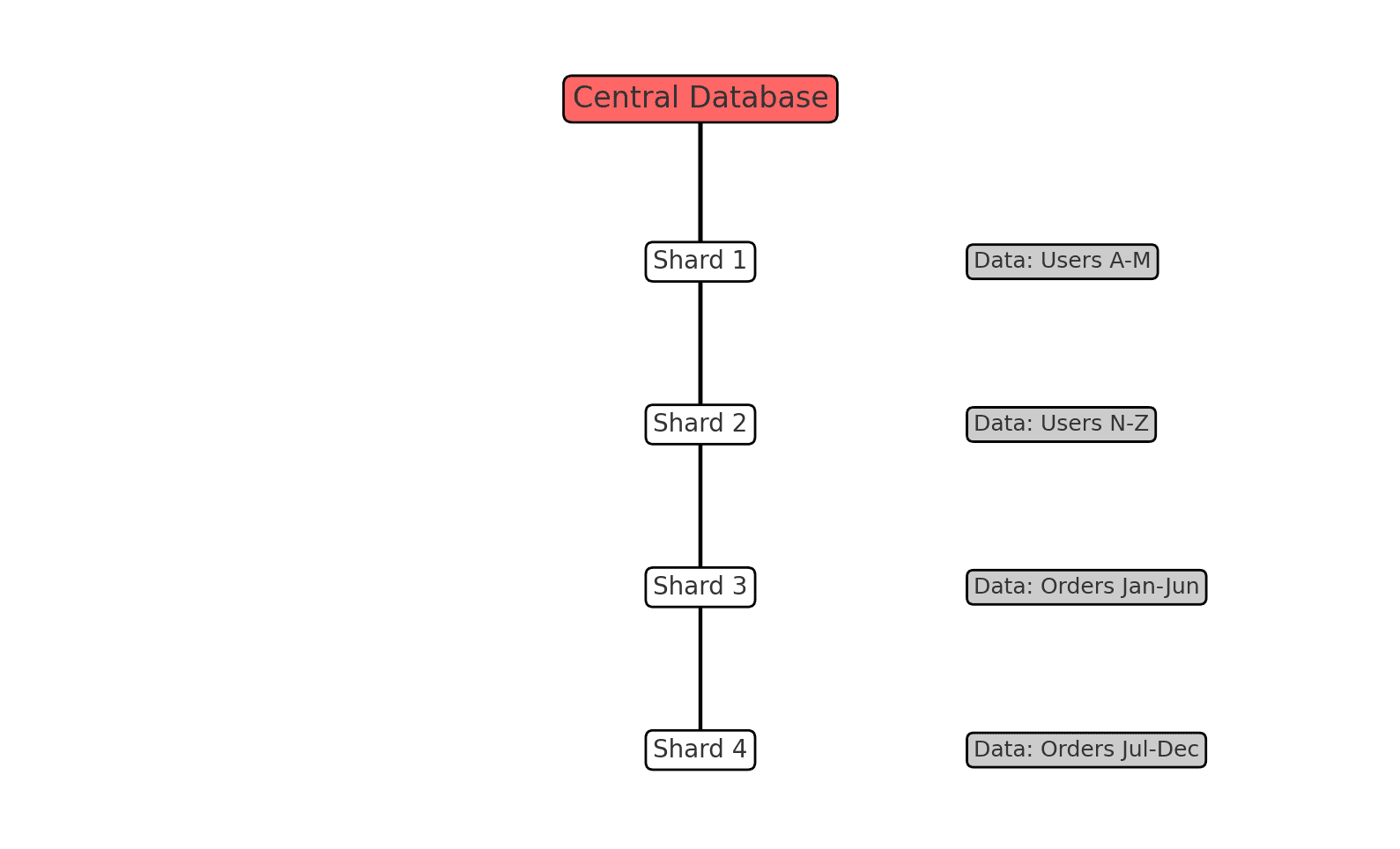Sharding
Sharding is a database architecture technique that splits data into smaller, manageable pieces called shards. Each shard is stored on a separate server or database instance. It distributes data to improve scalability and performance. Sharding is commonly used in large-scale systems to handle massive amounts of data efficiently.
Also known as: Data Partitioning, Horizontal Partitioning, Database Splitting, Data Distribution.
Comparisons
- Sharding vs. Partitioning. Sharding specifically distributes data across multiple servers or database instances, and Partitioning usually divides data within a single database or server.
- Sharding vs. Replication. Sharding splits different parts of the dataset across servers. Replication copies the same dataset to multiple servers for redundancy.
- Sharding vs. Vertical Scaling. Sharding increases capacity by adding more servers (also known as horizontal scaling). Vertical Scaling typically increases capacity by upgrading a single server’s hardware.
- Sharding vs. Clustering. Sharding splits and distributes data logically across nodes while Clustering groups multiple servers to act as a single database instance.
- Sharding vs. Load Balancing. Sharding distributes the data itself for better storage and access. Load Balancing distributes incoming requests across servers to optimize resource use.
- Did you know? Decodo residential proxies network is effectively used for load testing.
Pros
- Improved Scalability. Sharding distributes data across multiple servers, allowing the system to handle larger datasets and more users.
- Enhanced Performance. By splitting data, queries can target specific shards, reducing response times and load on individual servers.
- Fault Isolation. Issues in one shard do not typically affect the others, increasing system reliability.
- Cost Efficiency. Allows the use of smaller, less expensive servers instead of investing in a single high-powered machine.
- Flexibility in Scaling. New shards can be added as the dataset grows, providing a clear path for horizontal scaling.
Cons
- Increased Complexity. Managing and maintaining multiple shards adds complexity to database administration.
- Uneven Load Distribution. Improper sharding strategies can lead to "hot shards," where some shards have significantly more data or traffic than others.
- Difficult Data Rebalancing. Rebalancing data across shards when adding or removing servers can be resource-intensive and time-consuming.
- Complex Querying. Queries that span multiple shards are more complex and may be slower due to cross-shard communication.
- Application Dependency. Applications may need to be shard-aware, requiring changes in logic to interact correctly with the database.
- Potential Data Duplication. Some sharding strategies may lead to redundant data across shards, increasing storage requirements.
Example
Here is a visual representation of how sharding works. The central database distributes different portions of the dataset (e.g., users or orders) across multiple shards. Each shard stores a distinct subset of the data, enabling scalability and efficient data access.
